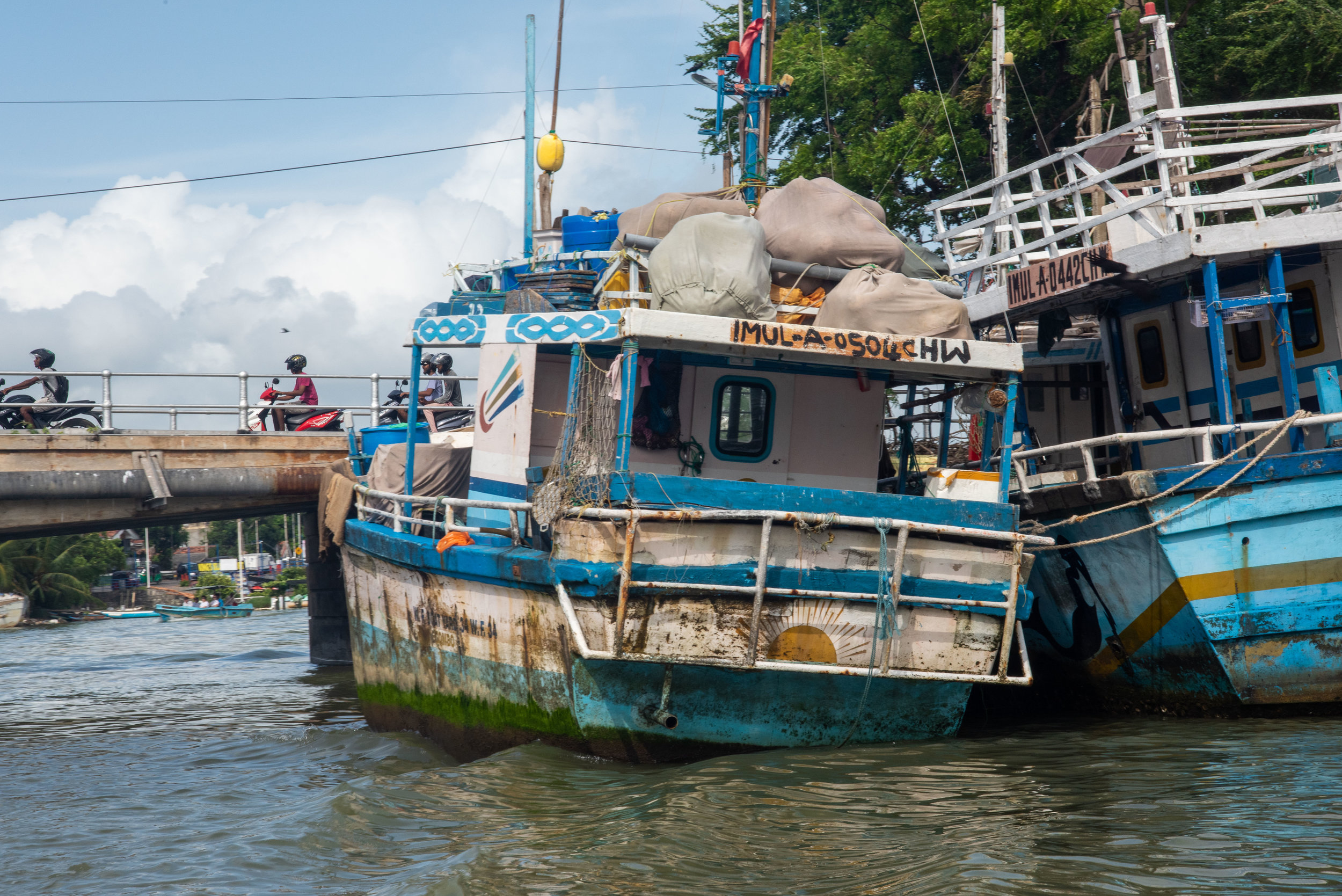This was to be our final full day in Sri Lanka and there were no formal group activities planned for the morning. The quiet start to the day allowed us to have an extended breakfast period without the need to keep an eye on the clock.
Negombo was one of the first territories in Sri Lanka developed in the 16thcentury by the Portuguese and their missionaries converted many citizens to Catholicism. One of the prominent landmarks in the city is St. Mary’s Church. The city of Negombo became very significant under the Dutch due to its proximity to spice growing areas, its network of communication canals and the large ocean connected lagoon which served a harbour and safe haven for an extensive fishing fleet. Today, Negombo is a beachside holiday centre and tourist hub being located close to Sri Lanka’s Bandaranaike International Airport.
After breakfast we went for a walk and checked out the expansive beach area in front of our hotel. There were very few people present and we soon discovered that the steepness of the beach-front means that the undertow makes it too dangerous for swimmers. Warning flags indicate the hazard. The beach was not very clean either with lots of plastic fragments and other litter spoiling the scene. The very humid conditions resulted in our camera lenses fogging up so few worthwhile photos were taken.
Beach at Jetwing Blue Hotel, Negombo, Sri Lanka
Beach at Jetwing Blue Hotel, Negombo, Sri Lanka
Jetwing Blue Hotel, Negombo
Crow outside restaurant at Jetwing Blue Hotel, Negombo
Across the road from the hotel were the expected tourist shops and we strolled down this street with shop owners keen for us to come inside to see their wares of jewellery, clothing, leather bags and souvenirs. Tuk-tuk drivers were similarly pressuring us to be passengers and were keen to take us to various sites including the local fish market which apparently is quite impressive.
In the mid afternoon our group went on a sight-seeing trip in two small boats starting in one of Negombo’s canals.
In the 15thcentury the Dutch expanded the waterways around Negombo to facilitate easier spice trading, especially for cinnamon which grew abundantly in the area. This extensive network of canals entailed 120 km of waterways extending south to Colombo and north to Puttalam. The canal we travelled down was only about 10 m wide and not much more than 1 m deep. Some of the bridges over the canal were so low that we had to stop and lower the shade canopy to get under.
Group in boat on Hamilton Canal
This canal ended at the 17 km long Negombo Lagoon where the banks were lined with hundreds upon hundreds of old wooden fishing boats many of which looked anything but sea-worthy, in fact some had partially sunk and lay there rotting. The 10 m fishing boats go out to sea across a potentially treacherous sand-bar to the Indian Ocean and principally fish for tuna, shark, lobsters and squid.
Fishing boat
Fishing boat
Dried fish being prepared for Negombo Fish Market
Ship wreck, Negombo Lagoon
Fishing boat near Negombo Fish Market
Fishing boat near Negombo Fish Market
Smaller ‘dug-out’ boats with outriggers are numerous too and they fish within the lagoon mainly for prawns and crabs. Nets are used extensively!
Fishing boat in Negombo Lagoon
Fishing village in Negombo Lagoon
Fisherman thowing net in Negombo Lagoon
Our little 5 m fibreglass boat was powered by a kerosene outboard motor with a sticking throttle cable and a troublesome gearbox. Nonetheless we had a pleasant journey around the lagoon finishing in the mangroves for a barbecue.
John, Marlis, Diana & Janet on boat in Negombo Lagoon
John, Marlis, Diana & Janet on boat
We had to wade through very shallow but muddy and slippery water to a secluded spot amongst the mangroves where we enjoyed barbecued fish, prawns and assorted vegetables. It was quite a novel BBQ experience being surrounded by hundreds of crows awaiting any left over barbecue scraps. The boating operation we’d used was operated by the Fernando family where dad catches the fish, mum cooks the barbecue and their sons drive the boats.
Diana & Janet wading to secret babecue spot in lagoon
Group at secret babecue spot in Negombo Lagoon
Captain Fernando & Mama Fernando cooking at secret babecue spot in lagoon
Mama Fernando cooking at secret babecue spot in lagoon
Preparing meal at at secret babecue spot in lagoon
Crows looking for scraps after babecue
Group walking through mangroves in Negombo Lagoon
We then headed back into the canal and returned to our hotel.
Map of Boat ride & barbecue in Hamilton Canal and Negombo Lagoon
Four of our group leave for Australia and home this evening and the day finished with saying goodbyes to our wonderful friends and offering heartfelt gratitude to our guide, driver and assistant.
With a certain degree of sadness we leave Sri Lanka tomorrow at 12:15. Our short visit to this fascinating country has been a most enjoyable and enlightening experience and the people have been so friendly and very welcoming.
In the three weeks prior to arriving in Sri Lanka we had been given quite forceful advice suggesting that we should reconsider and then cancel our travel plans.
Nearer to departure date we were hearing that the intense level of security was establishing a more stable and safe travelling situation so we decided to come to Sri Lanka.
Our travels have revealed that things have certainly improved and that most Sri Lankans we’ve spoken to are now desperately concerned for the situation to return to normal as the major industry, tourism has suffered terribly.
























